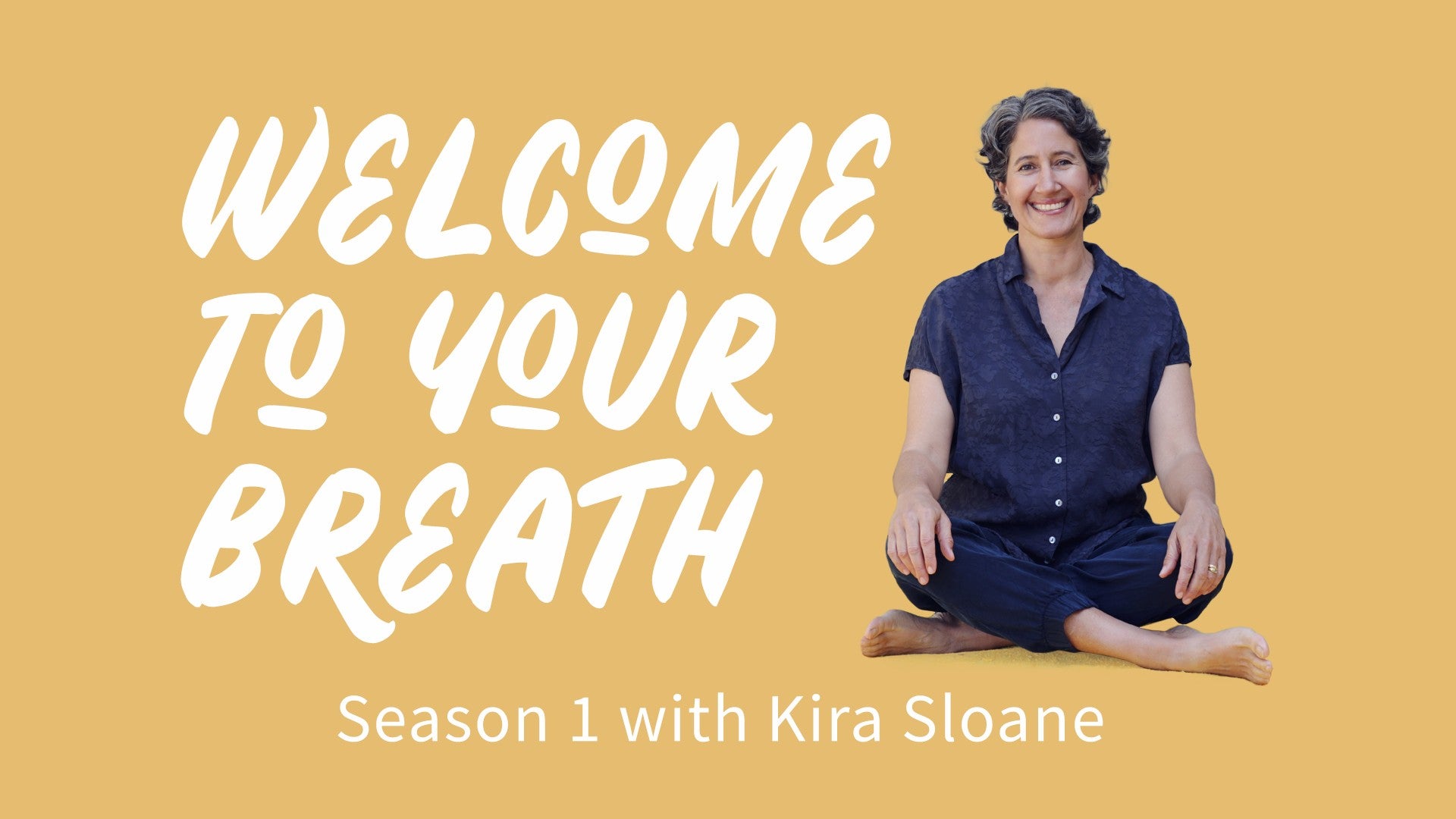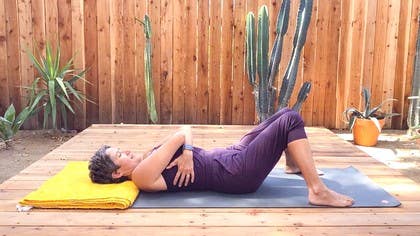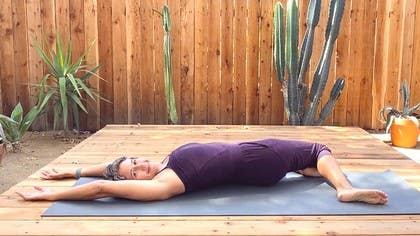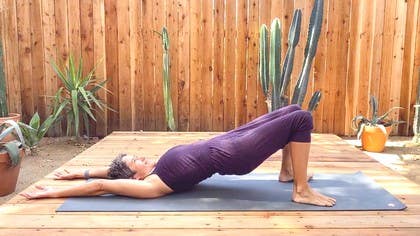Description
About This Video
Transcript
Read Full Transcript
Hi friends, let's begin with actually touching the breath. We'll use our hands and our sensitivity of touch, as well as a little bit of internal imagination. So go ahead and lie yourself down. Lie yourself down to be comfortable. So I've set up a blanket to make it more comfortable on my neck, so my head is supported. Bend your knees feet wide, maybe drop the knees together or if it would be better for you, support your knees. Let your hands find your low belly. So we're going to touch the belly, the diaphragm, the upper ribs, the collarbones, the neck. We're going to sense the breath at the mouth and the nose. We'll start with the belly. Big, deliberate inhale. And exhale, let it happen. And set it up so it's comfortable. Make sure your elbows are comfortable. And just begin to be aware of the movement of the breath in the belly, or more accurately, how the belly moves according to the breath. Because as you feel the rise of the inhale in the belly, and you feel the fall of the exhale in the belly, it's not really the air you're inhaling that you're feeling, it's the displacement of your internal organs. So as the diaphragm, which sits just underneath the ribs, contracts to allow the lungs to expand, it pushes your internal organs down. And as the diaphragm relaxes and the internal organs find their proper place, the belly falls. No need to be aggressive in trying to feel the breath into the hands, but there will be a natural enhancement. As soon as we pay attention to something, it becomes shinier. Really nice. Okay, let's find said diaphragm. So the easiest way to do this is to simply, as if you were giving yourself a little bit of a hug, so cross the arms, bring the hands to either side of your lower ribs. Okay, so my hands are kind of spread your fingers wide, might as well increase the surface area here. And it might already be obvious as you inhale, you might feel that horizontal expansion of your side ribs into your hands. And as you exhale, you might feel how you essentially, I'm going to say get skinnier, but you get narrower, less wide. This, unlike the belly, sometimes requires a little bit of effort. So squeeze your hands and see if you can really feel that inhale widen into your hands. And see if you can feel the exhale as it softens. A little bit of effort in the diaphragm sometimes will cause a pulling in the throat. So that's normal. Now the diaphragm, this beautiful dome shape muscle that connects around the fifth rib and then reaches her connective tissue down along the spine, all the way down into the lower back lumbar spine. And she also reaches up and holds the heart, the pericardium, the heart protector is intimately attached to the diaphragm. So with each inhale, you're stretching your heart. Yeah, with each exhale, softening, beautiful. A couple more moments here. This is a useful one. Nice. Okay, now release that. Turn your hands so that your back of your hands are pointing in towards your torso and bring your hands so they're in that upper rib cage area, close to the armpits. A little bit of a Molly Shannon superstar action. And now again, it might be quite natural. You might already have a sense with the breath of the movement in these upper ribs. And you know, our time together in the next handful of episodes in this season one is to help facilitate this movement and become more aware of it. To feel this a little bit more, see if you can have a sense of reaching your breath vertically down towards the belly, let that diaphragm widen, and then see if you can just feel how the upper ribs also widen. And as you exhale, then let those upper ribs soften, diaphragm starts to relax, and the belly is easy. Yeah. Beautiful. Okay, free your hands from this position. And now let your fingertips be a little more sensitive, a little lighter.
Let them just gently rest on these upper collar bones. And as your fingertips rest on your upper collar bones, without too much effort, just see if you can sense the movement in the collar bones that corresponds with your breath. There's no one right way to breathe. This first episode together is just about finding out where these different movements might be. But for you, see if you notice your collar bones opening or widening or lifting more at the beginning of the breath, middle of the breath, or at the end of the breath. Yeah. Okay, super nice. Let the fingertips now find their way alongside the cervical spine. So you've got your cervical spine, you're going to widen your fingertips a little bit so they're along the sides of it. And this is a more unusual spot to be aware of the breath. The breath moves in and out of this throat all day long. And yet it is so difficult to sense the movement of the breath in this area. And so it requires a little bit more sensitivity to the energetic of the breath. So let your fingers be tender, soften the jaw, relax that need for concrete evidence. And see if you can sense how the cervical spine responds to the movement of the neck. Are you maybe aware of a slight arching on the inhale and a slight flattening on the exhale? Are you aware of something else? Yes. Okay, beautiful. This could be an endless investigation. Release your hands, let one hand find its way to the belly and let the other hand come very close to your mouth without touching it. Let your palm be in front of your mouth. And with your mouth open, just gently see if you can experience the warmth of your breath on your palm as you exhale. Yes. And now let your mouth close and let your index finger come just beneath your nostrils barely touching. Just gently see if you can feel the breath and the warmth of your breath as you exhale onto your nose. Excuse me, onto your finger out of your nose. Okay, nice.
Gently relax your hands and just rest here and maybe for a couple more moments, just see if you can feel the response through your whole system of all the parts of you that respond as you inhale and as you exhale. Beautiful. Super nice. Okay, see you in the next episode.
Welcome to Your Breath
Comments
You need to be a subscriber to post a comment.
Please Log In or Create an Account to start your free trial.

















